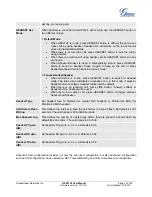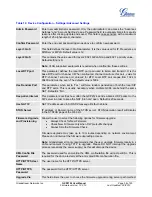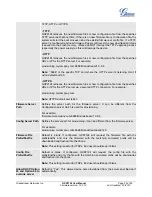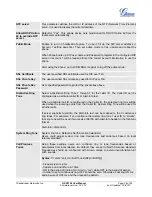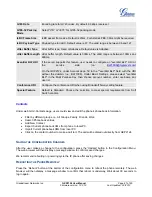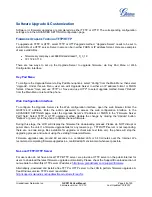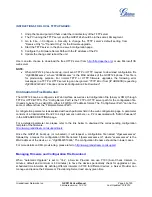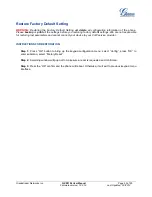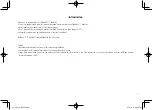
Grandstream Networks, Inc.
GXP2124 User Manual
Page
46 of 50
Firmware version: 1.0.3.19 Last Updated: 03/2012
INVITE
Preferred Vocoder
GXP2124 supports up to 7 different Vocoder types including G.711(a/µ) (also known
as PCMU/PCMA), G.723.1, G.729A/B, G.726-32, iLBC, G.722 (wide-band).
Configure Vocoders in a preference list that is included with the same preference
order in SDP message. Enter the first Vocoder in this list by choosing the appropriate
option in “Choice 1”. Similarly, enter the last Vocoder in this list by choosing the
appropriate option in “Choice 8”.
SRTP Mode
Enable SRTP mode based on selection. Default is “No”.
Symmetric RTP
Selects whether or not symmetric RTP is supported.
Silence
Suppression
This controls the silence suppression/VAD feature of the audio codec G.723 and
G.729. If set to “Yes”, when silence is detected, a small quantity of VAD packets
(instead of audio packets) will be sent during the period of no talking. If set to “No”,
this feature is disabled.
Voice Frames per
TX
This field contains the number of voice frames to be transmitted in a single Ethernet
packet (be advised the IS limit is based on the maximum size of Ethernet packet is
1500 byte (or 120kbps)).
When setting this value, be aware of the requested packet time (ptime, used in SDP
message) is a result of configuring this parameter. This parameter is associated with
the first codec in the above codec Preference List or the actual used payload type
negotiated between the 2 conversation parties at run time.
E.g.
, if the first codec is
configured as G.723 and the “Voice Frames per TX” is set to 2, then the “ptime” value
in the SDP message of an INVITE request will be 60ms because each G.723 voice
frame contains 30ms of audio. Similarly, if this field is set to 2 and the first codec is
G.729 or G.711 or G.726, then the “ptime” value in the SDP message of an INVITE
request will be 20ms.
If the configured voice frames per TX exceeds the maximum allowed value, the IP
phone will use and save the maximum allowed value for the corresponding first codec
choice. The maximum value for PCM is 10 (x10ms) frames; for G.726, it is 20
(x10ms) frames; for G.723, it is 32 (x30ms) frames; for G.729/G.728, 64 (x10ms) and
64 (x2.5ms) frames respectively.
Please be careful when editing these parameters. Adjusting these parameters will
also change the dynamic jitter buffer. The GXP2124 has a patent dynamic jitter buffer
handling algorithm. The jitter buffer range is 20 ~ 200 ms.
We recommend using the default settings provided. We do not recommend adjusting
these parameters if you are an average user. Incorrect settings will affect the voice
quality.
No Key Entry
Timeout
Default is 4 seconds. After the timeout, the phone will send out the dialed number.
Use # as Dial Key
This parameter allows users to configure the “#” key as the “Send” (or “Dial”) key. If
set to “Yes”, the “#” key will immediately send the call. In this case, this key is
essentially equivalent to the “(Re)Dial” key. If set to “No”, the “#” key is included as
part of the dial string.


